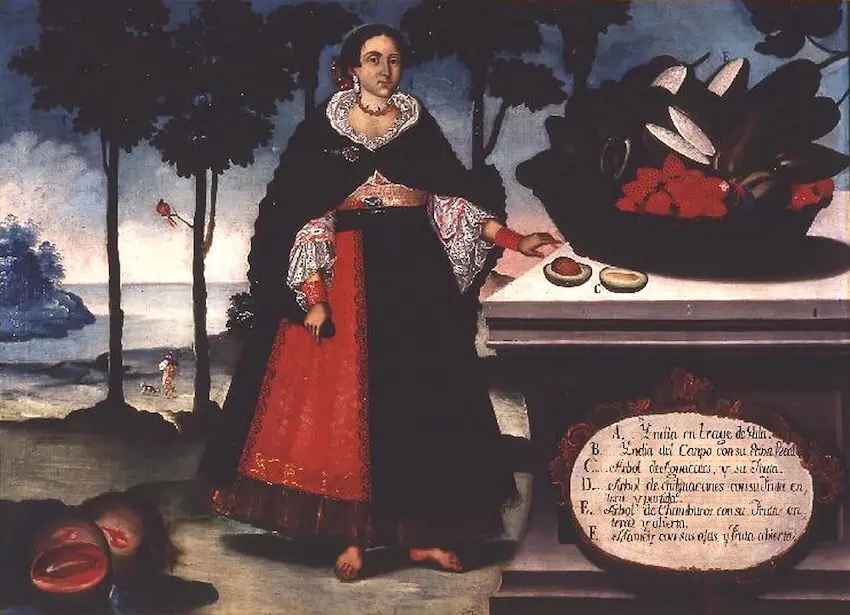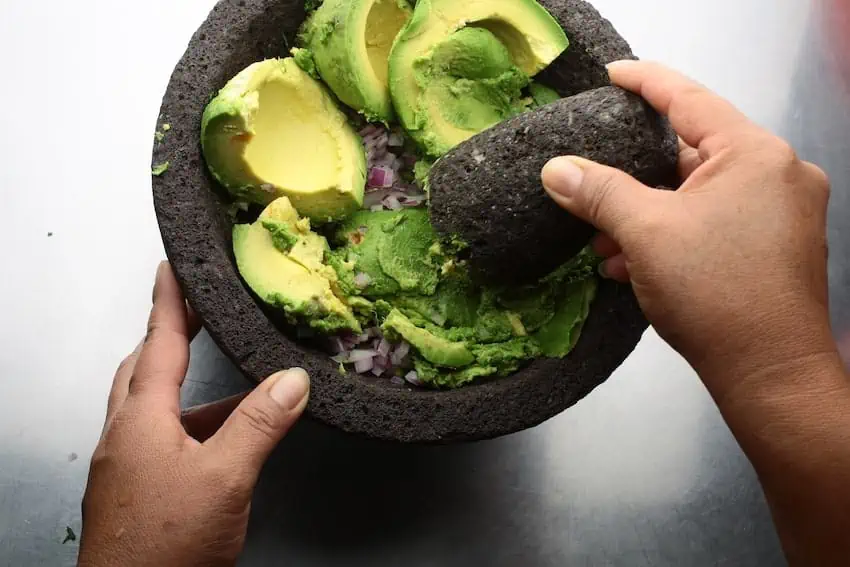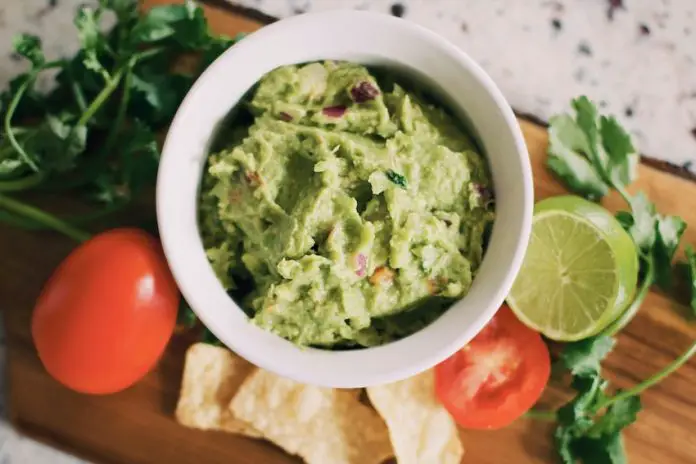Let’s not get it twisted: guacamole has always been delicious. It’s also absurdly healthy relative to its pleasing taste, not to mention extraordinarily versatile. It satisfies as a dip, as millions of Super Bowl party revelers know all too well, but it also works as a side dish. Or as a standalone treat. It’s damn near the perfect snack, in other words, although today’s recipes give it a bit more oomph than preferred by its inventors, the ancient Mexica, better known as the Aztecs. This (literally) sacred food has a long and complex history, and guacamole as we know it today used to be something quite different.
Yes, you heard that right. Guacamole is no Juanito-come-lately. It has been around for centuries, with subtle tweaks to its ingredient list over the years serving as a microcosm for the evolution of Mexican culture and cuisine.
A gift from the gods? You bet

For two million years during the Pleistocene epoch, avocado seeds were spread by poop from the now-extinct giant ground sloths of the Lestodon family, accounting for their dispersal in the Americas. Yes, this really happened. The first cultivators, however, were likely the Mokaya, a Mesoamerican precursor culture to the Olmec. Thus, although avocados have been avidly consumed in Mexico for at least 10,000 years, they’ve only been domesticated for about 3,800.
Prized by early Mesoamericans for the strength they gave and their powers as an aphrodisiac — the shape of the fruit led to its Nahuatl name, ahuacatl, synonymous with testicle — avocados didn’t become the staple ingredient in guacamole until much later and only via divine intervention.
The Mexica attributed the invention of guacamole to the Feathered Serpent Quetzalcoatl, a Toltec deity adopted as their god of wind and wisdom. According to myth, the god appeared before them in a vision to bestow the blessing. The first versions are thought to have been made sometime between the 14th and 16th centuries, but this cannot be known with any degree of exactitude. For all we know, Qutetzcoatl might have told the Toltecs, too. What is known with certainty is that early versions of the “avocado sauce” — the literal translation of the Nahuatl ahuacamolli — were never made with ingredients we now take for granted, like lime, cilantro and onion.
Those were later additions associated with Spanish colonization after Hernán Cortés and his allies conquered the Mexica capital of Tenochtitlán in 1521. The Mexica made guacamole with only avocado paste, chilis, salt and sometimes tomatoes. No, we don’t know how they ate it. Was it a dip? Or was it perhaps a spread, smeared on a tortilla as some kind of proto-version of avocado toast? The codices don’t say.
How Spanish colonialism changed guacamole’s flavor profile

Spain’s 300-year rule of Mexico and its other colonies in Asia and the Americas produced a global trade network that, among other developments, created many new foodstuffs. Spain eagerly imported traditional Mexican specialties like chocolate and avocados, even managing to grow the latter in areas of the mother country like Granada and Malaga.
Likewise, fruits like limes were introduced to Mexico, to the everlasting benefit of its cuisine and economy: it’s now the world’s biggest exporter. The two types now most commonly grown, the key lime and Persian lime, were introduced by Spaniards during the 16th century. The addition of lime made guacamole better in two significant ways: first, it gave the dish some flavorful zing, courtesy of its bright acidity. Second, lime is a preservative, helping to delay the browning associated with avocados as it oxidizes.
Like lime, cilantro is another essential element of contemporary Mexican cuisine. It too was introduced during the 16th century. Europe was the likely source, as the herb grows naturally in the southern parts of that continent and Asia. But wherever it came from, its aromatics and herbal flavor blended well with guacamole. Onion likewise proved a good fit, adding some crunchy texture.
As Cortés and his men discovered after landing at Veracruz in 1519, Mexico has its own species of onion, called xonacatl in Nahuatl. However, the Mexica apparently never considered it appropriate as a guacamole ingredient. It was added later, by the Spanish. We can also credit the Spanish for changing ahuacamolli to guacamole, which they did because they couldn’t properly pronounce the Nahuatl version. One sympathizes.
The continuing evolution of guacamole

The ingredients may have changed but the tools to properly prepare and serve guacamole haven’t — at all. The molcajete and tejolote, a mortar made from volcanic rock and its accompanying pestle, remain the preferred utensils, just as they were for the Mexica. There’s no reason to consider alternatives, either. The molcajete is perfect for efficiently mashing up avocados and other ingredients and thoroughly extracting their flavors. And as any owner of this essential culinary aid can attest, these signature flavors become embedded in the porous rock, carrying over to the next batch.
Avocados have been grown in the United States since the 1830s. But guacamole didn’t become popular in the U.S. until as recently as the 1990s, when it emerged, contemporaneous with NAFTA, as a tableside staple at restaurants and a must-have dip for tortilla chips at Super Bowl parties.
In recent years, several new ingredients have been used to spice up recipes in the U.S. I refuse to name them here since these are, let’s face it, insults to real guacamole. But the U.S., personified by California horticulturist Rudolph Hass, did pioneer what is now the dominant type of avocado. Eighty percent of the world’s avocados are now grown from the delicious and nutritious Hass variety, with Mexico their top exporter.
But as far as guacamoles go, the Mexica had the right idea. Keep it simple. And whatever they missed, Mexico’s mestizo culinary heritage has righted, with the addition of lime, cilantro and onion.
Chris Sands is the Cabo San Lucas local expert for the USA Today travel website 10 Best, writer of Fodor’s Los Cabos travel guidebook, and a contributor to numerous websites and publications, including Tasting Table, Marriott Bonvoy Traveler, Forbes Travel Guide, Porthole Cruise, Cabo Living and Mexico News Daily. His specialty is travel-related content and lifestyle features focused on food, wine and golf.
